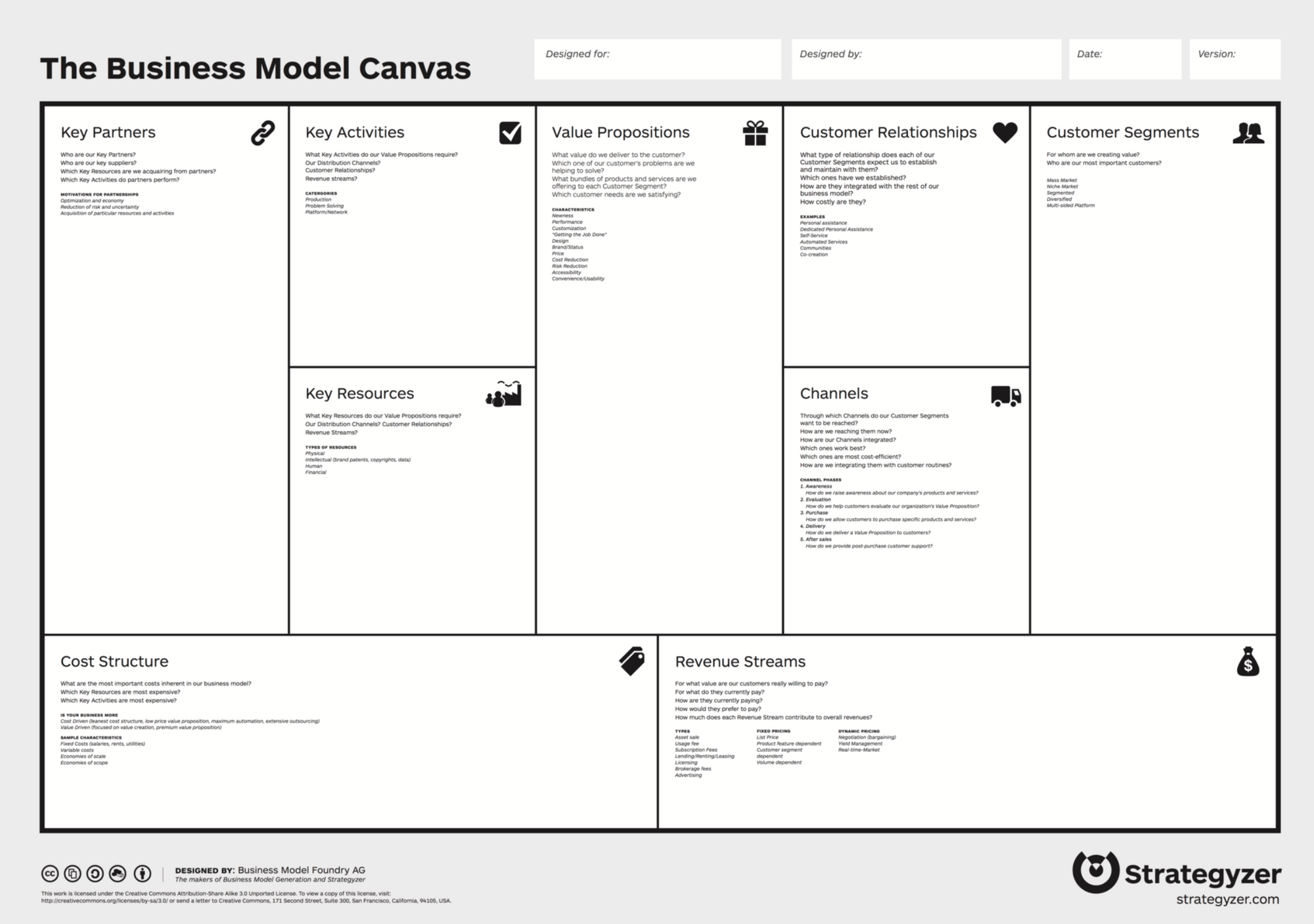2023-08-31 | Andrea Folger | 4 min read
BMC - more than a boring business model
You probably know this. You study something for an exam; hope that your knowledge is enough to pass the exam, and hopefully you will never be asked about this topic again afterwards.
I felt that way with the Business Model Canvas. My first encounter with the Business Model Canvas was during my studies. I can still remember that I found it totally boring and hoped that I would never need it in my job.
Now a few years have passed since my studies and I think the Business Model Canvas is an indispensable tool.
In this blogpost, I will explain to you that the Business Model Canvas is NOT just a boring theory and how it can help you in your professional life.
The Business Model Canvas, or BMC for short, was developed by Swiss Alexander Osterwalder and published in 2008. The BMC is a framework for visualizing and structuring business models.
There are many ways to write down a business model, so perhaps you ask
why use the BMC?
It's simple with it, you....
- manage to present your business model on one page,
- use a very simple structure,
- due to the size, you are forced to get to the point,
- recognize immediately dependencies,
- anyone can work with it

Now let's go through, and I will show you how the BMC is structured, which building blocks it consists of, and how to best work with it.
What you need? - The BMC printed out, Post-its and pens. You can start right away.
BMC Structure
The BMC consists of nine building blocks. When filling them in, you proceed according to a specific order:
Customer Segments
We start with the customer segments. To describe your customer segments, you should ask yourself the following questions:
- "For whom do I create value with my offering?"
- "Who are my most important customers?
If you can answer these questions, you already know for whom your business is targeted.
Value proposition
The next step is to filter out a suitable value proposition for each of the customer segments.
The following questions can help you:
- "What problem do customers want a solution for?",
- "What benefits/added value do I offer customers?",
- "What customer needs do I want to fulfil?",
- "What combination of products and services do I offer target groups?".
Channels
Next, there is the question of which sales and communication channels you want to use to deliver value to your customers.
Here, the following questions can help you:
- "Which way do I reach my customers?"
- "Which channels work best, what are the most efficient touchpoints?".
Customer Relations
In this segment, you should think about what kind of relationship you want to maintain with your customers. The following questions can help you to do this:
- "What kind of relationship does each customer segment expect from us?",
- "What am I doing to build, maintain, and grow the relationship?", and
- "Does the form of the customer relationship fit my business model?"
Revenue Streams
Now here's where pricing strategies come in, that is, a listing of your revenue streams that are tied to your customer segments or value. You should ask yourself
- "What value are my customers willing to pay for and how much?"
- "How are they currently paying and how would they like to pay?", and
- "How much does each revenue stream contribute to total revenue?".
Key Resources
"What key resources does my value proposition, my customer relationships, my sales channels, my revenue streams demand?" If you can answer these questions, you know all the resources needed.
Key Activities
This, is about the key activities, are necessary for you to offer your product/service.
- "What activities are needed to fulfil the customer value proposition?" and
- "What activities need the sales channels, revenue streams, and what activities need the customer relationships?"
Key Partners
This is where your collaborative partners are listed with the following questions: "Who are my key partners and who are my key suppliers?", "What key resources and what key activities do I depend on partners for?"
Cost Structure
Finally, financial planning looks at. "What are the key costs of my business model?" and "Which key resources and which key activities are the most expensive?" are questions you should ask yourself.
Once you have answered all the segments with the above questions, you will have a complete business model in front of you.
Congratulations!
You can now share it with your team, colleagues, stakeholders, etc. and soon you will have reached all stakeholders with your strategy.
Still not convinced?
Here are a few more points about why I love using the Business Model Canvas:
Communication
As you fill out the BMC, you will encounter some questions / ambiguities and ask for advice from your colleagues or partners. This is where super valuable discussions arise. You discuss your own model and discover things you weren't even aware of before. During this communication, you get to know and understand your business model even better, so you can also make better decisions in the future.
Visualization and transparency
The poster can be printed out and hung up anywhere: in the break room, in meeting rooms, in the hallway, on the toilet. Of course, you can also digitize it and distribute it in the various tools you have in use. With tools like Jira Align, you can create your business model and use it transparently for everyone.
Common understanding
With the BMC, you create a common understanding of your strategy globally. The nine segments pretty much sum up what value you want to create and what factors influence it and how. Every single person in your organization can now make decisions based on that, and you're all pulling in the same direction.
That's so much better than creating a 100-page document that no one reads in the end anyway ;)
Scandio on Instagram.
Connect with us on LinkedIn.
Look what Scandio is tweeting.



